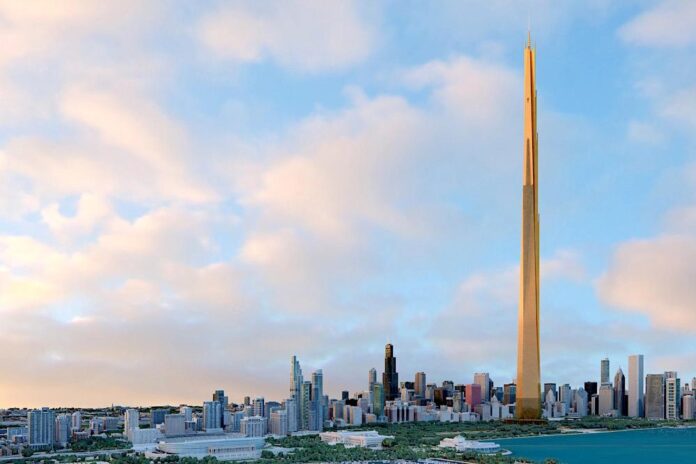Of the more than 1,000 structures that the celebrated American architect Frank Lloyd Wright designed, more than half were unbuilt—or worse, demolished—by the time of his death in 1959 at the age of 91.
But now, Spanish architect David Romero has collaborated with the Frank Lloyd Wright Foundation to show how those projects might have looked today. The new renderings include the Gordon Strong Automobile Objective, a planetarium commissioned in 1925, as well as the National Life Insurance building, the floating cabins of Summer Colony on Lake Tahoe, and his most famous unrealized structure, a mile-high skyscraper in Chicago known as the Illinois.
“It all started as a project to help me to improve my skills in the use of architectural rendering software tools,” Romero told Artnet News. “I have always been in love with Wright’s architecture, and I thought it would be useful, from an academic point of view, to recreate those buildings that have been demolished or never built.”
“I started by modeling the Larkin Administration Building [in Buffalo, NY], as it is iconic in architectural history,” he continued, “but I realized halfway through that I had bitten off more than I could chew since the building was too big and complex. I then decided to take a simpler building, the Pauson House, which took me about six months of work in my free time, and by the end of it I had acquired enough knowledge to return to Larkin.”
Romero posted those two renderings online in amateur forums and received positive feedback. Then, the Frank Lloyd Wright Foundation called him up, interested in helping him continue the project. Currently he’s working with the foundation to publish his architectural renderings in its quarterly magazine.
Romero likens his Wright recreations to the work of a photographer. “I try to find the most beautiful image but without forgetting that I also must describe the building in the best possible way,” he said. “For me it is very exciting to see the finished images of the buildings come out of the computer because of the realism that can be achieved—when buildings are recreated virtually, layers and more layers of details are added until the image seems as real as possible.”
“The feeling I have,” said Romero, “is that of visiting those structures—my work has something of a journey or discovery.”
Here’s a look at some of David Romero’s hyper-realistic visions of unrealized Frank Lloyd Wright projects.
Gordon Strong Automobile Objective
Sugarloaf Mountain, Maryland

Rendering courtesy of David Romero.

Rendering courtesy of David Romero.
Larkin Administration Building
Buffalo, New York

Rendering courtesy of David Romero.

Rendering courtesy of David Romero.
Rose and Gertrude Pauson House
Phoenix, Arizona

Rendering courtesy of David Romero.
The Illinois
Chicago, Illinois

Rendering courtesy of David Romero.

Rendering courtesy of David Romero.
Trinity Chapel
University of Oklahoma

Rendering courtesy of David Romero.
Morris House (Seacliff)
San Francisco, California

Rendering courtesy of David Romero.
National Life Insurance Building
Chicago, Illinois
Unbuilt

Rendering courtesy of David Romero.
Floating Cabins of Summer Colony
Lake Tahoe, California

Rendering courtesy of David Romero.
Huntington Hartford
Hollywood, California

Rendering courtesy of David Romero.
Butterfly Wing Bridge
San Francisco, California

Rendering courtesy of David Romero.
Arizona Capitol
Phoenix, Arizona

Rendering courtesy of David Romero.

























